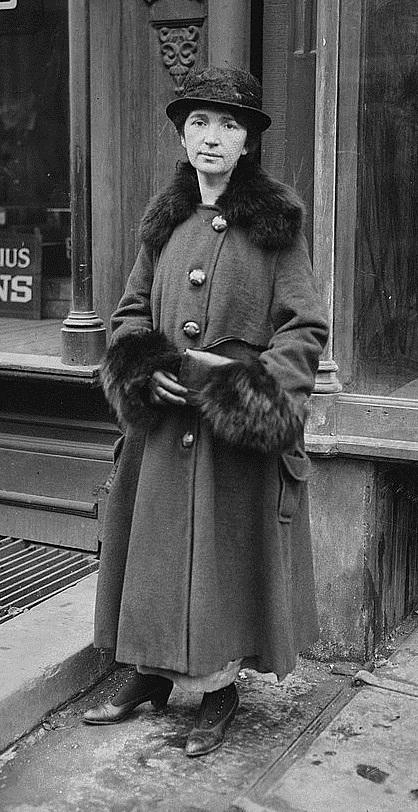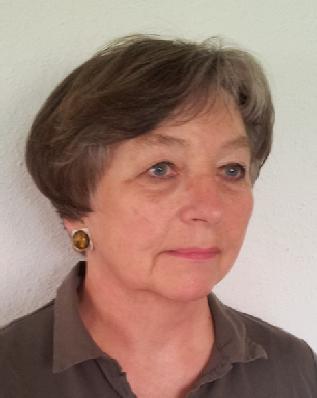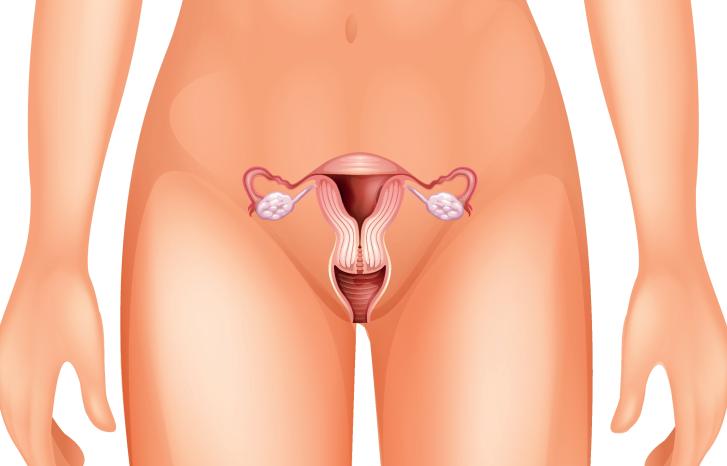Today, twenty per cent of all fertile women in Norway are on the pill. The fact that all women have the right to information about and access to the right type of contraception is self-evident. But this has not always been the case.
“I graduated from medical school the same year as the contraceptive pill appeared in 1967. I remember it so well, it was like a revolution!”
These are the words of Britt Ingjerd Nesheim, professor emerita and retired senior consultant at the Women’s Clinic at Ullevål University Hospital and University of Oslo.
“Having access to a contraceptive that was secure made it possible to decide not to have children if you didn’t want it. The opportunity to securely control your own sexuality and childbirths was something completely new.”
According to her, the new contraceptive was first met with scepticism.
“The medicines authorities, and health director Karl Evang in particular, were sceptical with regards to putting a pill out on the market that had been subject to so little research. And he was right too; frightfully little research had been carried out.”
Margaret Sanger deserves much of the honour for the pill.
When the pill was introduced, we knew little about side effects and the effects it might have on women’s long-term health.
“It would never have been approved under today’s system!”
It took seven years from the pill was first introduced as contraception for women in the US until Norwegian women could ask their doctor about the new pills. Norway was careful, and waited longer than both Germany and the other Scandinavian countries. However, in 1963, the pill reached the nation, but not as contraception.
“I haven’t been able to find out what the physicians’ desktop reference said about the pill at the time, but it was registered as a means for regulating women’s menstruation. Yet under the table, many were probably prescribed the pill as a contraceptive,” says Nesheim.
American female and male creators
Would the contraceptive pill have been invented without pressure from the feminist movement? Nesheim does not believe it would.
“Margaret Sanger deserves much of the honour for the pill, as does the financier Katharine McCormick.”

Margaret Sanger was one of eleven children in a poor, Irish-American Catholic family in Corning, New York. She became known as a women’s activist and advocate for contraception, and she founded the organisation Planned Parenthood. Nesheim thinks her engagement in these cases had a lot to do with her background.”
“She saw how her mother was exhausted from childbirths, and how the toil finally drove her to her death.”
Sanger was intelligent; she received a scholarship in order to study nursing. She eventually started giving out illegal information about birth control from her own family planning clinics, for which she had to serve a prison sentence of thirty days.
“She was very passionate about family planning,” says Nesheim.
When Sanger found out that there was a progesterone that could stop the ovulation in animals, she was eager to create something similar for humans.
“Sanger contacted the famous biologist Gregory Pincus.”
Pincus was, together with the doctor John Rock, interested in reproduction and fertility. Rock was a Catholic, and there was a lot of resistance towards contraception in the US at the time, particularly from the Church. Rock was in favour of contraception, however, and he wanted to participate in the development of this product. It involved finding the right balance between hormones that can stop the ovulation. But they needed money.
“This is where then next woman enters the stage,” says Nesheim.
“Katharine McCormick was a biologist herself. She was enormously rich after inheriting her diseased husband, and she wanted to finance the research.”
Scientific fraud and unsuspecting guinea pigs
Gregory Pincus and John Rock developed the first contraceptive pill, but the methods in use at the time, in the 1950s, would not have passed today’s guidelines for research ethics.
“It’s a paradox,” says Nesheim.
“The pill is fantastic, but it has been created under dubious circumstances.”
The article, and the research, was undocumented – in other words, he cheated.
Pincus and Rock experimented on animals, but also on women. They handed out the first test pills to poor women in Puerto Rico who wanted to avoid pregnancies. But they also tested the pills on women in Boston who came to see their doctor about infertility problems. These women wanted children, but were infertile.

“The women were childless for unknown reasons. The advantage for Pincus and Rock was that they menstruated regularly, and it was therefore easy to test whether the ovulation disappeared when they were given the new product.”
Rock wrote in an article about the experiment that other research had shown how large portions of progestins might be used as a cure against infertility. But when Nesheim looked at the references in the article more closely, she discovered something conspicuous:
“He referred to an article ‘in preparation’. The article, and the research, was undocumented – in other words, he cheated.”
Through the experiments with the childless women, Rock and Pincus were able to prove that progestins hinder the ovulation, which enabled them to study what effects this had on the womb lining. Among other things, they found that the bleedings became irregular when the women were given a lot of progestin, which they then tried to regulate by adding oestrogen.
“In this way, they tried out different combinations of the two hormones before they eventually ended up with the product that was launched as the world’s first contraceptive pill: Enovid.”
The unsuspected guinea pigs who had sought help from the doctor in order to get pregnant did not receive any assistance to that end.
“It is often said that the Norwegian term ‘P-pillen’ is named after Pincus, but you don’t believe that. Why not?”
“The term ‘p-pille’ is only used in the Scandinavian countries, and it is only in these countries we call it ‘prevensjon’ (prevention). In English, the Norwegian word for ‘prevensjon’ is contraception, and the pill is called either just the pill, the contraceptive pill or birth control pill. In German, it is called simply die Pille, and in French, la pilule, or la pilule contraceptive. The P in the Norwegian word must therefore stand for ‘prevensjon’.
Side effects and the development of a safer pill
The pill was approved and introduced to the American market on a very weak scientific basis with regards to possible side effects. In the beginning, a new experiment was carried out in Puerto Rico. But the results of the experiment were worthless, according to Nesheim.
“What can you expect, really? The intentions were perhaps good, but at the same time, the researchers did not consider the women and their situation. The women failed to take the pills at the right time of the day, and many dropped out of the study. They had chosen Puerto Rico because the legislation there was weak. They could thus carry out experiments there that were difficult to get permission for everywhere else.”
A lot of research has been done on the contraceptive pill since then. Control-based studies, register-based studies and qualitative research may provide knowledge on how the pill affects the health of those who use it.
In a way, all women have been guinea pigs for the development of the contraceptive pill.
“In a way, all women have been guinea pigs for the development of the contraceptive pill,” says Nesheim.
After the pill had been on the market for a while, a few women who used it suffered from blood clots, and some suspected that they might have been caused by the new contraceptive. It was discovered that the hormones increased the risk of blood clots, and the combination was changed. The first pill contained 150 micrograms of oestrogen; today it only contains between 20 and 40 micrograms.
“What do you know about the scope of serious side effects over the fifty years since the pill was introduced in Norway?”
“Nobody can give you any exact numbers. But the chances of blood clot increases by two to three times with the use of the contraceptive pill. The question remains how many would have suffered from blood clot without the pill. Since the women who use the pill are young and healthy in the first place, and those who are particularly prone to the condition are weeded out, very few actually suffer from blood clot.”
Mette Haase Moen, gynaecologist and professor emerita at Norwegian Univeristy of Science and Technology (NTNU) says the combination of hormones, and particularly the variant of the progestin hormone used, is decisive for the risk of blood clot.

“Pills containing the progestins levonorgestrel and norethisterone have a lower risk. The greatest risk of blood clot is with pills containing large doses of ethinylestradiol and antiandrogene progestins,” she says.
“At the same time, there are antiandrogene pills that treat blemished skin and acne problems in addition to being a contraceptive.”
Antiandrogene progestins block the effects of male hormones such as testosterone.
As regards the risk of heart attack, Nesheim says it is extremely low. She is more interested in how the pill may be beneficial for the prevention of cancer.
“The use of the contraceptive pill protects against cancer in the womb lining, the ovaries and the colon. However, the risk of breast cancer slightly increases. When counterbalancing the chances, the total risk of cancer is basically zero.”
The number of suicides and suicide attempts are two to three times higher among women who use the pill.
The risk she describes is estimated through research on women on the contraceptive pill compared to control groups of women who are not on the pill. Register-based surveys also contribute to the study of health risks connected to the use of the pill. Possible psychological side effects of the pill are harder to measure than the physical.
“Many complain about mood swings. The fact that many feel depressed is difficult to measure. But a Danish register-based study appeared recently. This study shows that the number of suicides and suicide attempts are two to three times higher among women who use the pill. This particularly applies to young women. It thus appears that the depression that many women complain about is very real, and may have dire consequences.”
“You need to be aware of this possible side effect and stop taking the pill if it gets serious,” she emphasises.
See also: Shorter waiting time and earlier abortions due to abortion pill
Low threshold for young women
The contraceptive pill first sold very little in Norway, but both the sale and the use of the pill increased towards the 1980s. The share of women on the pill has remained stagnate on approximately 20 per cent since the mid ‘80s.
“The intrauterine device, or the coil, appeared almost at the same time as the contraceptive pill, and was well received in Norway. Compared to other countries such as the US, Norway’s use of the coil was relatively high by comparison with the pill,” says Nesheim.
Many women who had already given birth preferred the coil. Young women in particular were recommended to use the pill.
“It is great that they protect themselves in a good way against unwanted pregnancies.”
In 2002, the contraceptive pill became free of charge for all women between the age of sixteen and twenty. At the same time, midwives and health visitors were authorised to prescribe the pill. This made it possible for young girls to see the health visitor at school about contraception rather than having to ask their doctor.
“I think it is very good that they made it easier, and especially that it became free of charge. It’s a good thing that those who have little money and who really don’t need an unwanted pregnancy receive the help they need,” says Nesheim.
She would have wanted to go even further.
“Already by the end of the 1980s, many people argued for making the pill prescription-free. I am still in favour of that. With enough information, women should be able to buy it over the counter.”
The reason why the pill is not prescription-free is, according to Nesheim, that the producers were worried about being regarded as promoters of poor morals. They were also afraid that they would be at a disadvantage in potential compensation claims if there were no doctors as middle persons between the pharmaceutical companies and the users.
Although the pill is a good contraceptive, doctors of today recommend other means of birth control. If you forget to take the pill, you are no longer protected against pregnancy. The medical profession now therefore recommend so-called larc birth control, that is, long-acting reversible contraceptives such as contraceptive implant or coil.
Uncertainty and myths
If you seek online information about the contraceptive pill on pages such Sex og samfunn, Underlivet or Kvinneguiden, you will find a lot of facts, but also a lot of questions. Will the pill make you fat? Are mood swings common? Why have I lost my sex appetite? Do I have to menstruate once every month? Nesheim is not surprised by the fact that girls who consider trying a new type of contraception have questions. But some myths have proven harder to kill than she had imagined.
“I thought the one about pauses was dead already. In the beginning, it was believed that you should have a few months’ break to see if everything worked as normal. That is just rubbish.”
There is no reason to menstruate when you’re on the pill.
“The monthly bleeding is another myth. When you’re on the pill, you don’t menstruate, because you have no ovulation. Those who created the pill thought that women like to bleed once every month in order to feel that their body works normally.”
Mette Moen explains:
“It is a common idea that menstruation is natural. The developers of the contraceptive pill thought it would be more easily accepted if it simulated the natural cycle.”
“From nature’s side, the purpose of the menstruation cycle is to form a new womb lining for the inseminated egg to enter into. With the contraceptive pill, a much smaller womb lining is formed, which generates less bleeding. If you use the pill over a long period of time, the womb lining will become so thin that there is nothing to bleed out from. The same applies when you use the coil or contraceptive injection, which are both pure progestin contraceptives.”
According to Nesheim, it is about time that all women know this:
“We’ve said this for years now: there is no reason to menstruate when you’re on the pill.”
The significance cannot be overestimated
Elisabeth Lønnå is a historian and the author of several books about the Norwegian feminist movement. According to her, the pill has played a central role in the history of Norwegian gender equality.
“The contraceptive pill appeared at the same time as some other important events in women’s history. The feminist movement flourished, and women entered the labour market and politics. In this way, women obtained an important place in society,” she says.
“I remember when the pill first appeared, and how important that was for us who were young students at the time. Yet it was a bit difficult in the beginning. In particular, I remember a doctor at the University of Oslo who refused to prescribe the pill to me because I was unmarried. Fortunately, I got it from another doctor who thought it was a good thing that I wanted to use it.”
The contraceptive pill appeared at the same time as some other important events in women’s history.
“What role has the pill played for Norwegian women’s sexual life?”
“It has had everything to say! You couldn't always be sure that a man would use a condom. You had the diaphragm, but it was difficult to use and not very romantic.”
“I remember a quote from the feminist Margarete Bonnevie, who said that there are ‘no married women who haven’t been afraid of getting pregnant’. So the pill had a lot to say, both inside and outside of the marriage.”
“How has the Norwegian feminist movement regarded the pill?”
“The feminist movement has always been positive. I don’t know about the women from the Norwegian Women's Public Health Association or the deeply religious groups, but I cannot remember a single objection from the feminist movement.”

“In the 1960s and ‘70s, many were in favour of free love. It obviously became both freer and safer for women after the introduction of the pill. I also think it is fair to say that the pill is partly responsible for putting an end to the use of such horrible expressions as ‘bastard’ and ‘knock up’.”
Britt Ingjerd Nesheim agrees with Lønnå.
“It really was a revolution; the significance of the contraceptive pill cannot be overestimated!”
She emphasises that the pill has liberated women from a life of many childbirths.
“Imagine all the married women who gave birth to a flock of children before. They experienced problems with prolapse of the uterus, serious incontinence – all these problems are gone, we’ve even forgotten that they existed,” she says.
Mette Moen agrees, but she also points out another side of the transition from contraceptives such as condom and diaphragm to hormonal contraceptives.
“It has given the woman freedom and control, but it also increases her risk of getting sexually transmitted diseases, in comparison to the use of condom.”
She believes that researchers will continue to develop the contraceptive pill. It is not unlikely that the doses of hormones will be reduced, and that the researchers will discover progestins that have fewer side effects. Then the question remains whether this revolutionary pill will also be available for men?
“A contraceptive pill for men has been under testing. It contains progestin, which hinders the production of sperm cells. But it also reduces the production of testosterone, which then needs to be added. Whereas women’s pill contains progestin and oestrogen, the contraceptive pill for men will contain progestin and testosterone.”
After fifty years with the pill that gives Norwegian women full freedom to control their own reproduction, the contraceptive pill for men is overdue. But in theory, the revolution may come, also for men.
Translated by Cathinka Dahl Hambro.
The contraceptive pill was launched in the US 1961.
It was first introduced in Norway in 1963, but was only approved as a contraceptive in 1967.
The contraceptive pill contains a combination of two substances that function in the same way as the hormones oestrogen and progesterone. There are numerous contraceptive pills on the market, and their contents and combinations vary.
The substance similar to oestrogen is called ethinylestradiol, whereas the substance similar to progesterone is a progestin. There are several different progestins, such as for levonorgestrel.
The contraceptive pill hinders the ovulation. The womb lining becomes less penetrable for the sperm cells and less receptive for a potentially fertilised egg.



